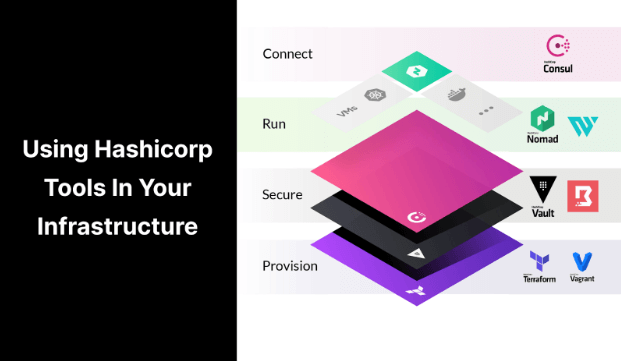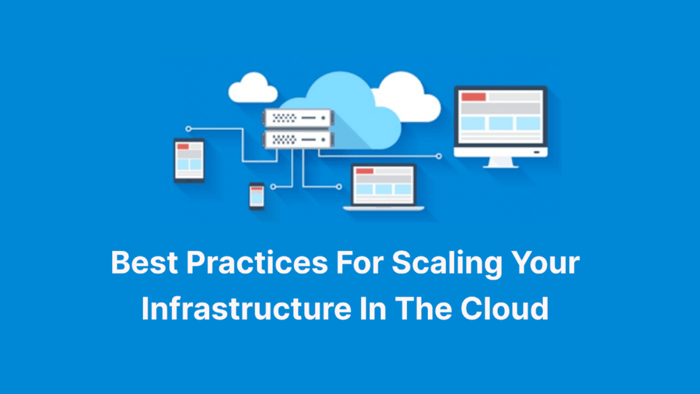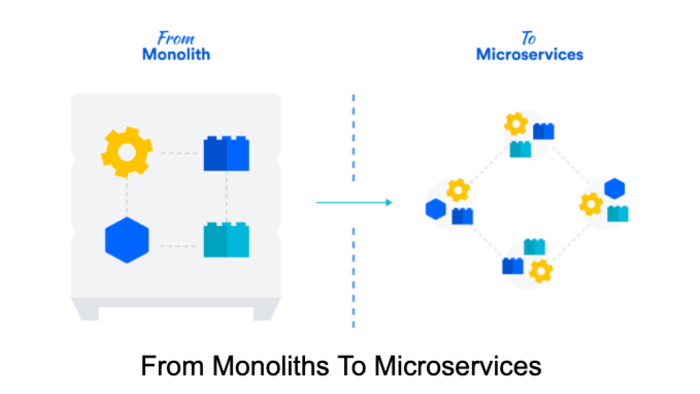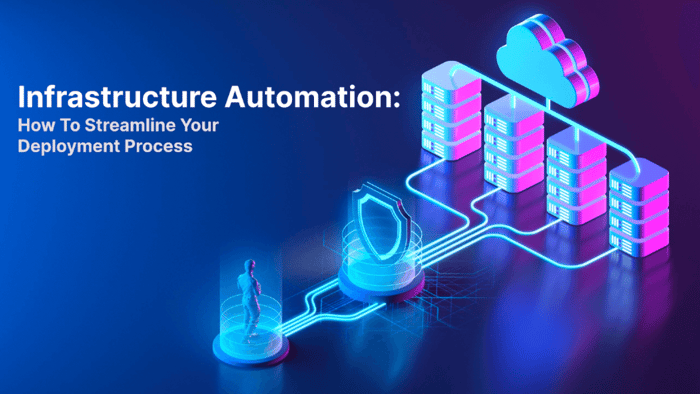Get a better understanding of the Hashicorp ecosystem and the benefits of its tools.
Introduction
You're a DevOps professional responsible for managing your organization's infrastructure. Your team is continuously struggling with manual and time-consuming tasks, from provisioning and scaling to configuration management. The complexity of your IT environment keeps increasing, making it difficult to keep up with the demands of modern IT operations. You yearn for a solution that can simplify infrastructure management, automate tedious tasks, and improve overall efficiency.
In today's fast-paced and evolving IT landscape, efficient infrastructure management is crucial for businesses to stay competitive. The effective utilization of infrastructure resources and streamlined operations are key factors for success. This is where Hashicorp tools shine, providing a comprehensive ecosystem designed to simplify and automate infrastructure management.
Hashicorp offers a range of tools that have gained immense popularity among DevOps professionals, system administrators, IT managers, and software engineers. From Terraform for infrastructure provisioning to Vault for secure secret management and Consul for service discovery, Hashicorp tools offer a suite of powerful solutions that tackle the challenges of managing modern IT infrastructures.
In this article, we will explore the topic of using Hashicorp tools in your infrastructure, addressing the pain points faced by DevOps professionals and IT managers alike. We will dive into the key tools offered by Hashicorp and examine their significance in modern IT environments. Whether you're just starting your infrastructure automation journey or looking to enhance your existing workflows, this article will provide you with the insights and knowledge needed to leverage Hashicorp tools effectively.
By the end of this article, you will have a better understanding of the Hashicorp ecosystem, the benefits of using their tools, and how they can help you achieve efficient infrastructure management and automation. Whether you're seeking practical tips, real-world examples, or best practices, you are covered. So, let's embark on this journey of empowering your infrastructure management with Hashicorp tools.
Prerequisite
To work effectively with Hashicorp tools and make the most out of their capabilities, certain prerequisites and knowledge are necessary. Let's discuss the basic requirements for leveraging Hashicorp tools in your infrastructure management journey:
-
Familiarity with Infrastructure Concepts: Having a solid understanding of infrastructure concepts is essential. This includes knowledge of fundamental components such as servers, networks, storage, and virtualization. Understanding how these components interact and contribute to the overall infrastructure will provide a strong foundation for working with Hashicorp tools.
-
Knowledge of Cloud Platforms: As many organizations today rely on cloud infrastructure, familiarity with cloud platforms is crucial. Hashicorp tools are designed to work seamlessly with major cloud providers such as AWS, Azure, and Google Cloud. Understanding the core concepts and services offered by these cloud platforms will enhance your ability to utilize Hashicorp tools effectively.
-
Scripting or Programming Languages: Proficiency in scripting or programming languages is beneficial when working with Hashicorp tools. Hashicorp tools often require creating configurations, templates, and scripts to define and manage infrastructure resources. Popular languages used with Hashicorp tools include HCL (HashiCorp Configuration Language), JSON, and YAML. If you have experience in languages such as Python, Ruby, or Go, it will be an added advantage for customizing and extending the functionality of Hashicorp tools.
By meeting these prerequisites, you will be better equipped to work with Hashicorp tools and leverage their features for infrastructure management and automation. So, let's dive into the world of Hashicorp tools and take your infrastructure management to the next level!
Understanding Hashicorp Tools
Hashicorp is a well-known company that offers a suite of powerful tools designed to simplify and automate infrastructure management. Their tools have gained significant popularity in the DevOps and IT communities due to their ability to streamline operations, enhance efficiency, and enable infrastructure as code practices. Let's explore the key Hashicorp tools that are relevant for infrastructure management.
-
Vagrant: Vagrant is a tool for creating and managing development environments. It allows you to define the desired configuration of virtual machines, making it easy to set up consistent and reproducible development environments across different operating systems. Vagrant streamlines the workflow of developers and ensures that the development environment matches the production environment.
-
Packer: Packer enables you to create machine images for multiple platforms using a single configuration. It automates the process of building, configuring, and deploying machine images, which can be used for provisioning virtual machines, containers, or cloud instances. Packer supports a variety of builders, including cloud providers and virtualization platforms, allowing you to create images that are consistent, secure, and optimized for your specific requirements. Packer excels in use cases such as creating golden images, speeding up application deployment, and enabling infrastructure reproducibility.
-
Terraform: Terraform is a popular Infrastructure as Code (IaC) tool that allows you to define and provision infrastructure resources across various cloud providers and on-premises environments. With Terraform, you can describe your infrastructure using declarative configuration files, and Terraform will handle the provisioning and management of resources. It provides a consistent and scalable approach to infrastructure provisioning and allows for efficient collaboration among team members.
-
Vault: Vault is a tool for managing secrets and protecting sensitive data in your infrastructure. It provides a secure and centralized solution for storing and accessing secrets, such as API keys, passwords, and certificates. Vault ensures the secure distribution of secrets to authorized applications and users, implementing fine-grained access controls and robust encryption mechanisms. It is great for securing sensitive data, managing secrets for applications and databases, and enabling secure multi-cloud deployments.
-
Boundary: Boundary is a powerful tool designed to address the challenges organizations face when granting secure access to critical systems. It follows the principle of least privilege, allowing users to securely access applications and machines. With Boundary, organizations can implement tightly scoped identity-based permissions, enabling just-in-time network and credential access through integration with HashiCorp Vault. It also offers single sign-on capabilities, allowing users to authenticate through external identity providers like Okta or AWS IAM. It prioritizes extensibility by supporting a diverse ecosystem of identity providers, policy engines, secrets management tools, target types, and cloud providers, allowing organizations to choose their preferred vendors without lock-in.
-
Nomad: Nomad is a workload orchestrator that allows you to deploy and manage applications across a cluster of machines. It simplifies the management of containerized and non-containerized applications, providing automated scheduling, resource optimization, and application health monitoring. Nomad enables efficient resource utilization and facilitates the scaling and deployment of applications.
-
Waypoint: Waypoint is a powerful tool designed to simplify and streamline the process of deploying applications from development to production. It offers developers a single file and a single command("waypoint up") to describe and execute the deployment. The tool provides confidence in deployments by offering features like logs and exec to validate and debug deployments. Its plugin system allows integration with various tools and platforms, making it adaptable to different environments and workflows. Ultimately, Waypoint was created to address the developers' primary goal: deploying applications efficiently and effectively while reducing the complexity and learning curve associated with modern deployment processes.
-
Consul: Consul is a service networking tool that simplifies service discovery, configuration, and segmentation in distributed systems. It allows you to register and discover services dynamically, making it easier to build and scale distributed systems. Consul provides a robust foundation for building resilient and highly available architectures.
By leveraging Hashicorp tools such as Vagrant, Packer, Terraform, Vault, Boundary, Nomad, Waypoint and Consul, you can significantly enhance your infrastructure management workflows, achieve greater efficiency, and scale your systems effectively. These tools provide robust solutions for provisioning, securing secrets, enabling service discovery, and creating consistent machine images. Incorporating these tools into your workflows empowers you to build scalable, secure, and efficient infrastructure tailored to your organization's needs.
Infrastructure Automation with Hashicorp
Automation is a cornerstone of modern IT operations, enabling organizations to streamline processes, improve efficiency, and achieve consistent results. Hashicorp tools, particularly Terraform, provide powerful capabilities for infrastructure automation, allowing you to define and manage your infrastructure as code (IaC). Let's delve into the concept of infrastructure automation and understand how Hashicorp tools facilitate this process.
Infrastructure automation involves replacing manual, time-consuming tasks with automated processes, reducing the risk of human error and accelerating deployment cycles. By adopting infrastructure automation, organizations can achieve faster provisioning, seamless configuration management, and dynamic scalability. Hashicorp tools play a pivotal role in this transformation.
Let's take a closer look at how Hashicorp tools, particularly Terraform, facilitate infrastructure automation. Terraform allows you to define infrastructure resources as code, which can be stored in version control systems such as Git. This enables teams to collaborate effectively, share code, and maintain a history of changes. Terraform's IaC approach also provides a consistent and repeatable process for provisioning and configuring infrastructure resources, ensuring that infrastructure is deployed in a predictable manner.
Here are some practical examples of how Terraform can be used for infrastructure automation:
-
Provisioning cloud resources: Terraform can be used to provision resources on cloud platforms such as AWS, Azure, and Google Cloud. For example, you can use Terraform to define an AWS EC2 instance, including its size, security groups, and associated storage volumes.
-
Configuring infrastructure resources: Terraform can be used to configure infrastructure resources such as network components, databases, and load balancers. For example, you can use Terraform to define a database cluster, including its size, replication factor, and backup policies.
-
Scaling infrastructure resources: Terraform can be used to scale infrastructure resources based on demand. For example, you can use Terraform to define an autoscaling group that adjusts the number of instances based on CPU utilization or network traffic.
Imagine you need to provision a scalable web application on a cloud platform. With Terraform, you can define the desired infrastructure resources, such as virtual machines, load balancers, and databases, in a configuration file. Terraform then automates the provisioning process, ensuring that the infrastructure is created accurately and consistently across multiple environments.
Here are the steps you need to setup Terraform to provision an AWS EC2 instance:
-
Firstly, if you do not have Terraform installed on your development environment, you need to do that. You can download and install the appropriate package for your operating system from the official website.
-
Next, set up the cloud platform account(in this case, we are using AWS). Create an AWS account, if you do not already have one. In the AWS management console, navigate to the IAM service, create a new IAM user or use an existing user. Generate the access and secret access key for the user.
-
Register the keys in your development environment by the following commands:
$ export AWS_ACCESS_KEY_ID=<your_access_key>
$ export AWS_SECRET_ACCESS_KEY=<your_secret_access_key>
-
In your development directory, create a Terraform configuration file named “main.tf”. The configuration file is written in Hashicorp Configuration Language(HCL). Here is an example a simplified Terraform configuration for provisioning an AWS EC2 instance:
resource "aws_instance" "web_server" {
ami = "ami-0c94855ba95c71c99"
instance_type = "t2.micro"
subnet_id = "subnet-0c94855ba95c71c99"
tags = {
Name = "Web Server"
}
}
-
Initialize Terraform, by running the command below in the terminal of your development directory:
$ terraform init
-
Validate the Terraform configuration by running the command below in the terminal of your development directory:
$ terraform validate
-
Plan and review the changes Terraform will make using the command below:
$ terraform plan
Review the output to ensure it meets your requirements.
-
Finally, apply the changes and provision the infrastructure by running the following command:
$ terraform apply
-
You can log in to your AWS account and navigate to the EC2 service, you should find that the EC2 instance with the specified configuration has been provision.
To make any changes to the infrastructure, modify the Terraform configuration file (e.g., main.tf), run Terraform plan to review the changes, and then Terraform apply to apply the changes. Remember to review the changes carefully before applying them to avoid any unintended modifications.
In this example, Terraform defines an AWS EC2 instance with a specific Amazon Machine Image (AMI), instance type, and subnet. By executing the Terraform commands, the infrastructure is provisioned automatically based on the defined configuration.
Streamlining Infrastructure Management
Managing infrastructure efficiently is crucial for organizations of all sizes, from startups to enterprises. Hashicorp tools offer a comprehensive suite of solutions that streamline and simplify infrastructure management tasks. Tools like Consul and Vault provide robust configuration management capabilities, enabling you to store and manage secrets, key-value stores, and service discovery.
The illustration above depicts how Consul serves as a service mesh tool to facilitate seamless communication between microservices within a distributed system. At the core of this communication is a load balancer that distributes incoming requests across multiple instances of micro applications. Consul acts as the central control plane, providing service discovery and health monitoring functionalities. It maintains a registry of all microservices and their available instances. Consul Template, a templating engine, dynamically updates configuration files on micro applications based on information from Consul. This enables the micro applications to route their requests through the load balancer to the appropriate instances, ensuring efficient and reliable communication between the different microservices over the internet.
With Consul, you can easily centralize service configurations, automate service discovery, and enable seamless communication between microservices.
Vault, on the other hand, offers secure storage and dynamic secrets management, allowing you to handle sensitive data effectively. The illustration above shows how Vault Eaas can return decrypted and encrypted data to applications for usage or storage. Applications can also send data to Vault Eaas and have the encrypted or decrypted data returned or sent to an API.
One of the key advantages of using Hashicorp tools for infrastructure management is the centralization of tasks. With a unified toolset, you can eliminate the need for multiple disparate tools, reducing complexity and increasing efficiency. This centralized approach simplifies provisioning, configuration, and deployment processes, ensuring consistency and reducing the chances of errors.
Orchestrating Infrastructure with Hashicorp
In complex environments, orchestrating infrastructure is essential for efficient operations, scalability, and ensuring the reliability of services. Infrastructure orchestration involves managing and coordinating various components of a system to work together harmoniously. It allows organizations to automate the deployment, configuration, and scaling of infrastructure, reducing manual effort and minimizing human error.
Hashicorp’s Terraform and Consul can be used to facilitate infrastructure orchestration. Terraform allows you to define infrastructure as code, providing a declarative language to describe resources and their dependencies. With Terraform, you can orchestrate the provisioning and configuration of resources across multiple providers, enabling consistent infrastructure management. This capability is particularly beneficial in multi-cloud or hybrid environments.
Consul, on the other hand, enables service discovery, health checking, and dynamic configuration. It acts as a central registry for service information, allowing you to orchestrate communication between services in a distributed system. By leveraging Consul's capabilities, you can easily manage and coordinate multi-tier architectures, load balancing, and service mesh setups.
Let's say you have a microservices-based application with multiple services running on different cloud providers. You can use Terraform to define and provision the required infrastructure resources, such as virtual machines, networking components, and storage, across these providers. Then Consul can be used to enable service discovery and dynamic routing, ensuring seamless communication and load balancing between the microservices.
Deployment and Scalability
Efficient and scalable infrastructure deployment is a critical aspect of managing modern IT environments. Hashicorp's Terraform and Packer are key tools for infrastructure deployment. Terraform enables the provisioning and management of infrastructure resources, while Packer allows for the creation of machine images. Together, they provide a comprehensive solution for deploying infrastructure in a consistent and automated manner.
With Terraform, organizations can define infrastructure as code, specifying the desired resources and their configurations. This declarative approach ensures that deployments are reproducible, version-controlled, and auditable. Terraform's ability to work with multiple cloud providers, including AWS, Azure, and Google Cloud, makes it an ideal tool for managing diverse infrastructure deployments.

Packer complements Terraform by allowing the creation of standardized machine images. These images serve as the building blocks for deploying infrastructure, reducing configuration drift and ensuring consistent deployments across environments. Packer supports various cloud providers and virtualization platforms, enabling efficient image creation for different target environments.
Scalability is another crucial aspect of infrastructure deployment, and Hashicorp tools offer valuable capabilities in this regard. Terraform allows for the easy scaling of infrastructure by defining scalable resources and leveraging cloud provider-specific features such as autoscaling groups. With Packer, you can create machine images that are optimized for scalability, ensuring efficient resource utilization as your infrastructure needs grow.
Conclusion
In conclusion, the importance of using Hashicorp tools for infrastructure management and automation cannot be overstated. By leveraging Hashicorp tools, organizations can improve their infrastructure security, scalability, and efficiency while simplifying infrastructure management tasks. As discussed in this article, Hashicorp tools can be used for configuration management, infrastructure orchestration, deployment and scalability, and secrets management. With their highly extensible nature, Hashicorp tools offer a wide range of use cases for both enterprise and startup-level organizations.
I nudge you to explore and implement Hashicorp tools in your infrastructure. Getting started with Hashicorp tools is easy, as they provide detailed documentation and support for their tools. Additional resources, links, and references are available if you want to continue learning and exploring the capabilities of Hashicorp tools.
Overall, Hashicorp tools can play a significant role in improving infrastructure management processes and provide a wide range of benefits for organizations of all sizes. By leveraging these tools, organizations can simplify infrastructure management tasks and focus on building and delivering products and services that meet the demands of their customers.
Akava would love to help your organization adapt, evolve and innovate your modernization initiatives. If you’re looking to discuss, strategize or implement any of these processes, reach out to [email protected] and reference this post.





